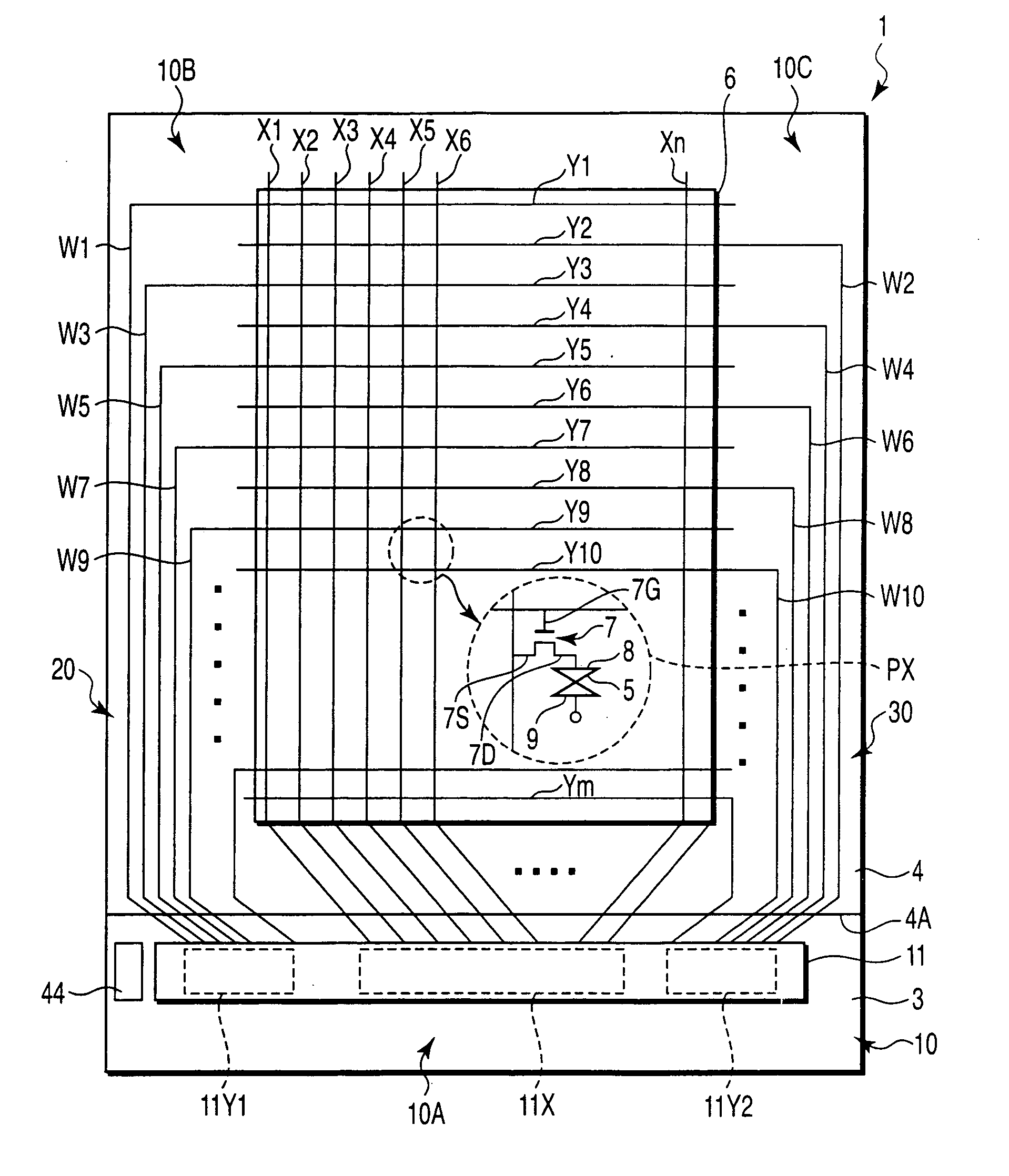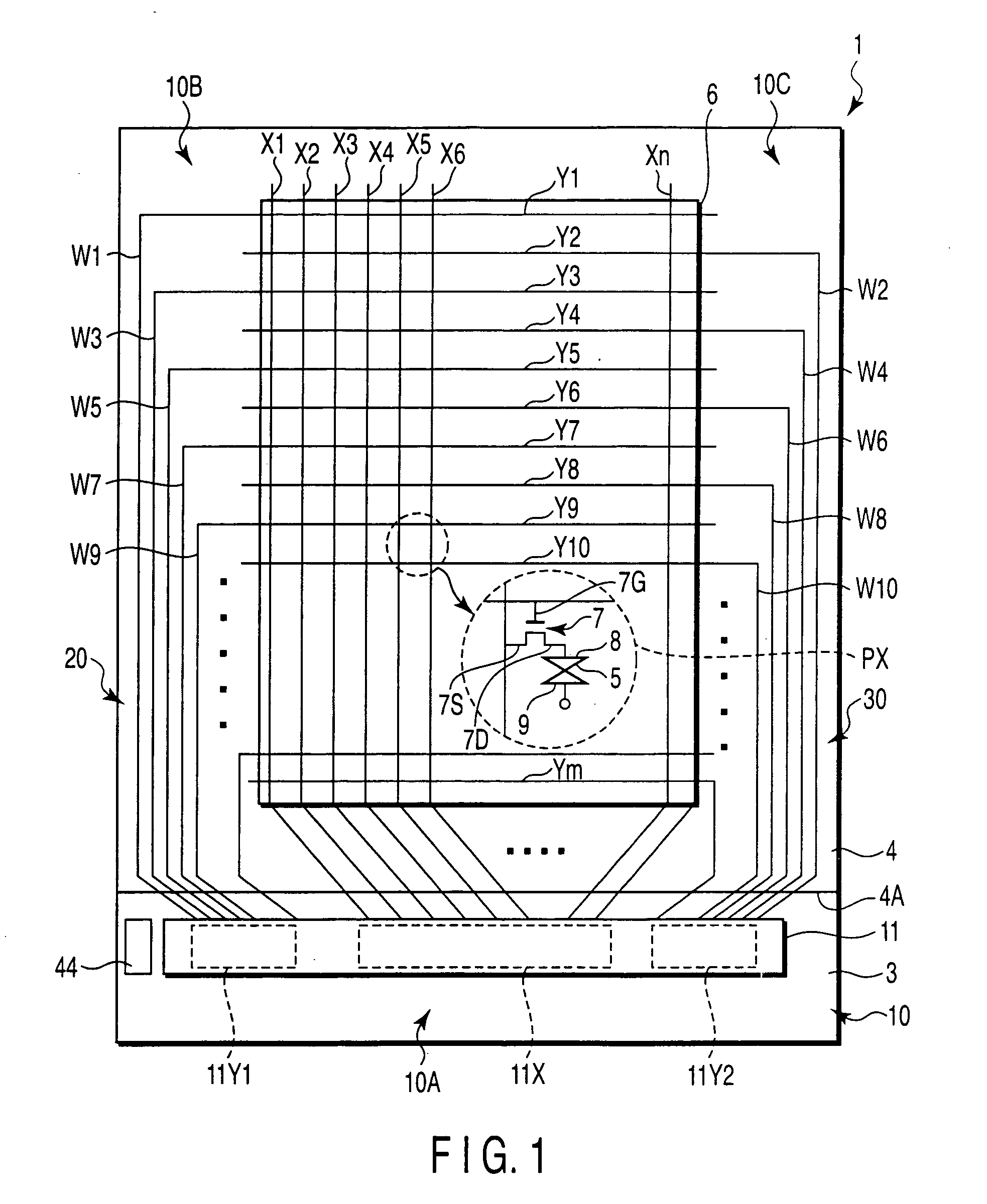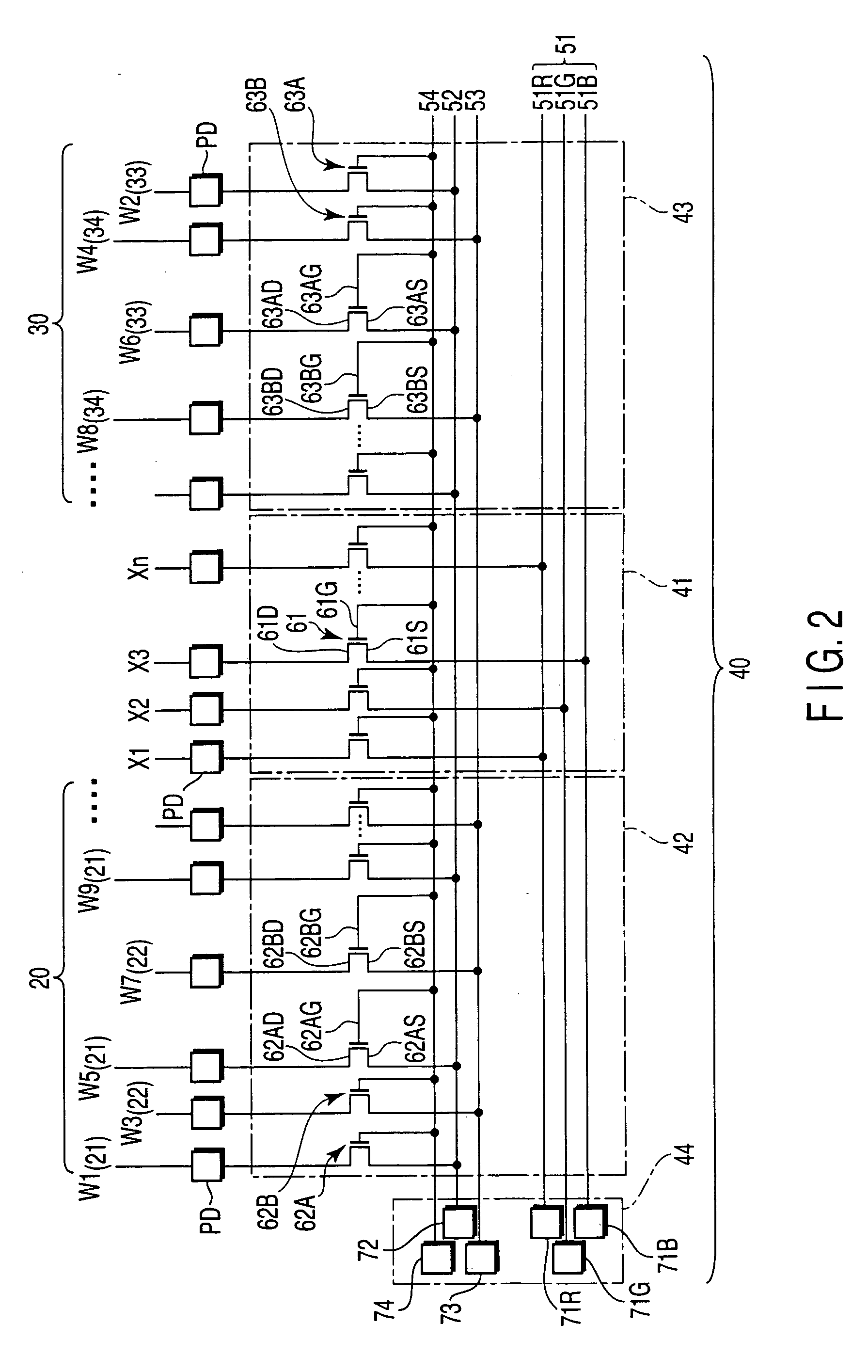Display device
- Summary
- Abstract
- Description
- Claims
- Application Information
AI Technical Summary
Benefits of technology
Problems solved by technology
Method used
Image
Examples
first embodiment
[0023] As is shown in FIG. 1, a liquid crystal display device, which is an example of a display device includes a substantially rectangular, planar liquid crystal display panel 1. The liquid crystal display panel 1 comprises a pair of substrates, that is, an array substrate 3 and a counter-substrate 4, and a liquid crystal layer 5 that is interposed as an optical modulation layer between the pair of substrates. The liquid crystal display panel 1 includes a rectangular effective display section 6 that displays an image. The effective display section 6 is composed of a plurality of display pixels PX that are arranged in a matrix.
[0024] The array substrate 3 includes, in the effective display section 6, a plurality of scan lines Y (1, 2, 3, . . . , m) that extend in a row direction of the display pixels PX, a plurality of signal lines X (1, 2, 3, . . . , n) that extend in a column direction of the display pixels PX, switching elements 7 that are arranged for the respective display pix...
second embodiment
[0080] In the second embodiment, as shown in FIG. 5, the array substrate 3 includes an inspection wiring line section 40 for inspecting a wiring defect between the lines of the first wiring line group 20 and a wiring defect between the lines of the second wiring line group 30 on the peripheral part 10, and a wiring defect in the effective display section 6. The inspection wiring line section 40 includes a signal line inspection section 41 that is provided in association with the signal line driving section 11X, a first scan line inspection section 42 that is provided in association with the first driving unit 11Y1 of the scan line driving section 11Y, a second scan line inspection section 43 that is provided in association with the second driving unit 11Y2 of the scan line driving section 11Y, and a pad section 44 for inputting various signals to the respective inspection sections 41, 42 and 43.
[0081] The signal line inspection section 41 includes signal line inspection wiring lines...
PUM
 Login to View More
Login to View More Abstract
Description
Claims
Application Information
 Login to View More
Login to View More - R&D
- Intellectual Property
- Life Sciences
- Materials
- Tech Scout
- Unparalleled Data Quality
- Higher Quality Content
- 60% Fewer Hallucinations
Browse by: Latest US Patents, China's latest patents, Technical Efficacy Thesaurus, Application Domain, Technology Topic, Popular Technical Reports.
© 2025 PatSnap. All rights reserved.Legal|Privacy policy|Modern Slavery Act Transparency Statement|Sitemap|About US| Contact US: help@patsnap.com



